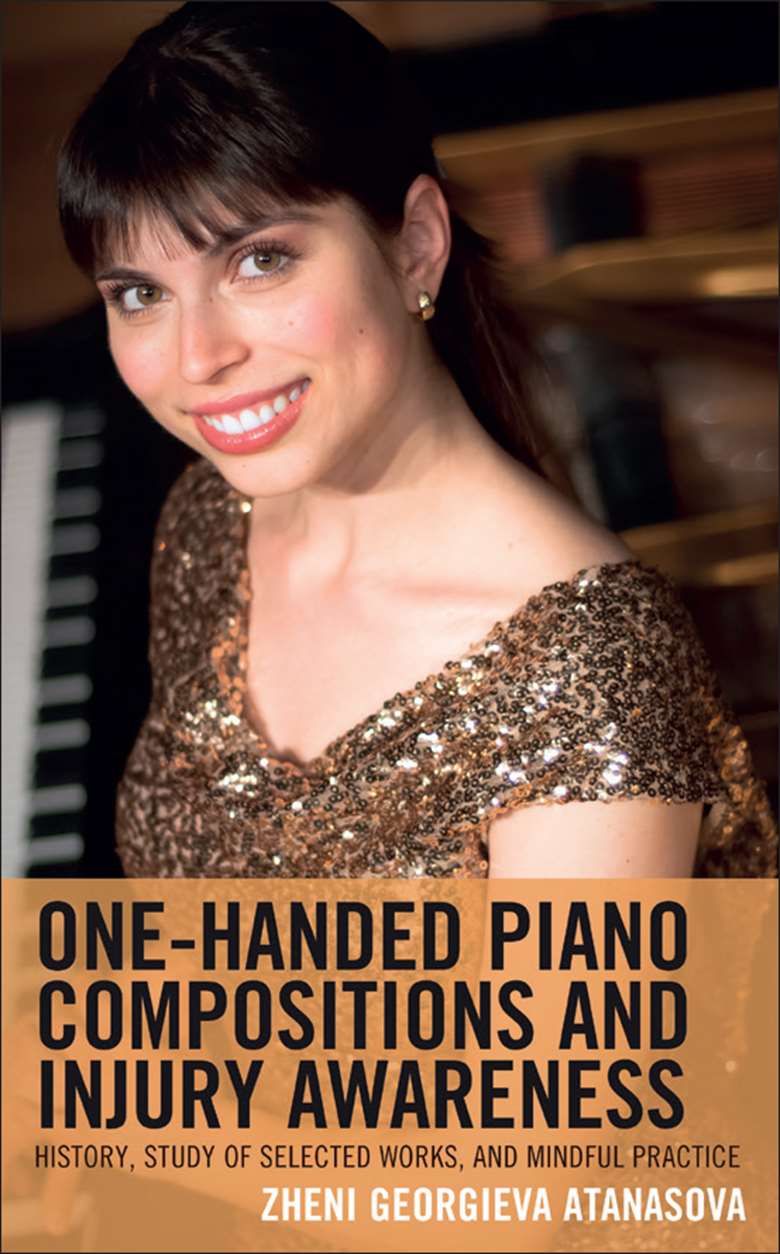One-Handed Piano Compositions and Injury Awareness: History, Study of Selected Works and Mindful Practice (Zheni Georgieva Atanasova)
Murray McLachlan
Sunday, October 2, 2022
Atanasova has produced a stimulating, introductory book to important subjects

This is an easily read and illuminating introduction to a huge subject – in fact, to several different but related subjects. Atanasova is a pianist who has suffered considerably from injury caused by years of daily practice. Her personal experiences are recalled in detail, making for gripping if somewhat upsetting reading. Suffering for your art in the literal sense is a dreadful reality, particularly when it can be avoided by adopting a healthy posture, sound technique and mindful practice.
Atanasova’s book begins with a survey of one-handed literature and performing pianists, followed by a general survey of approaches that can overcome injury awareness (including the Feldenkrais Method, Taubman Approach and Alexander Technique, plus less familiar ones such as ‘body mapping’). Though it is all rather general and summarised, the prose style is immediate and never academic.
With chapter three Atanasova moves into descriptive analysis mode, surveying a variety of works for single hand only, including CPE Bach’s Clavierstück für die rechte oder linke Hand allein and Scriabin’s celebrated Prelude and Nocturne Op 9. Each entry reads like an expanded programme note, and it is fascinating to learn about works from Émile Naoumoff, Karmella Tsepkolenko and Sophie-Carmen Eckhardt-Gramatté.
Inevitably there are omissions. Surely some of Godowsky’s left-hand Chopin recreations are essential in a book like this? And Atanasova seems totally unaware of Ronald Stevenson, who, in addition to extended passages for single hand in his Passacaglia on DSCH wrote the wonderful left-hand Etudette d’après Chopin et Korsakov (combining Chopin’s Op 10/2 with Flight of the Bumble Bee), as well as three studies on Chopin’s ‘2/4’ waltz (one for right hand alone, one for left hand alone, and another combining the 2/4 waltz with Chopin’s A-flat Valse brillante).
The fourth chapter on practice contains some wise comments but is very generalised and brief. I found it disappointing that Atanasova emphasises memorisation as the chief benefit of practising away from the piano. She could have explored more provocatively the way in which such work can nurture almost every aspect of interpretive discovery.
The final pages give the impression that Atanasova was in a hurry to finish. Following a mention of Madeline Bruser’s The Art of Practicing, she writes, ‘I only wish I had known about it (as well as the rest of the sources in this last part of the book) when I was working on the main content.’ This sits next to references to Joan Last’s wonderful three-volume collection of exercises, Freedom in Piano Technique that reads as if Atanasova thinks the series is a textbook.
These quibbles apart, Atanasova’s survey makes for enjoyable, if hardly scholarly reading. Perhaps each chapter should have been expanded into independent studies. As it stands, Atanasova has produced a stimulating, introductory book to important subjects.






